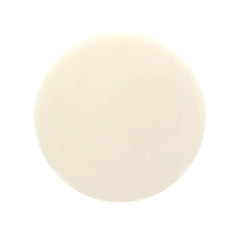

Don't add too much, because the paste becomes thicker after cooling down.

Add 1 extra tablespoon of cornstarch if you need it to be thicker. How much cornstarch you use will depend on the consistency you need. I wouldn't add any sugar, since I assume the powder is already sweet. Hi Angela, I haven't tried it with bubble tea powder, but I think it can be done! I recommend using a mixture of milk or coconut milk (about 2 cups), taro powder (3-4 tablespoons) and cornstarch (I would say maybe about 4 tablespoons). To thaw, leave the paste in the fridge overnight. Simply place the paste in an airtight container and freeze. To store, place in an airtight container and refrigerate.įor longer storage, you can freeze taro paste for up to 2 months. Homemade taro paste will stay fresh in the fridge for up to 2 weeks.
COCONUT TARO BUBBLE TEA HOW TO
Similarly, if you want a thinner paste (for bubble tea for example), add a little bit more coconut cream How to store Yes, it’s actually THAT simple to make taro paste! If you want a smoother texture, you may need to use a food processor or blender.

Cook over low heat until the texture firms up.Add in the coconut cream, sugar, and oil.Mash the steamed taro with a fork or potato masher.The only ingredient that needs preparation is the taro root. I love making taro paste because it’s just so simple. This way the cooking process is much faster.
COCONUT TARO BUBBLE TEA PRO
Pro tip: always peel, wash and cube taro before steaming. If you’re making larger quantities, you might want to do them in batches to ensure the taro is cooked throughout. Whichever method you use, steaming taro takes roughly 25-30 minutes. Ensure the steamer is not directly touching the water, then cover with a lid and steam. For this method simply place the metal steamer over a pot with boiling water. Improvise with a pot and a metal steamer or sieve.Electric steamer or multi-cooker – the kind you’d use for any vegetables.This type of steamer is also great for making taro steamed buns. Using a traditional bamboo steamer – yields the best flavour in my opinion.The easiest way of cooking taro is by steaming it. Still, I would argue it’s definitely worth the price for its distinct flavour and health benefits! How to cook taro I should mention that fresh taro root is not exactly cheap in Western countries and can cost up to £12 per kilogram ($16 per 2 pounds). Where to buy taro, you ask? Most specialty Asian supermarkets will stock taro, especially Thai or Chinese shops. You can replace coconut oil with any other odourless oil (sunflower or canola / rapeseed). Oil makes the paste much smoother and keeps it from clumping up. If using condensed milk, reduce the amount of sugar added.Ĭoconut oil – although optional, it’s recommended. You can also use coconut milk, heavy (double) cream or condensed milk. I like to use cream because it has a thicker texture. Sugar – plain granulated sugar is enough, or you can use brown sugar for a more caramelised flavourĬoconut cream – used to make the mashed taro silkier and creamier. Cannot be replaced with anything else in this recipe. Taro – raw, peeled and cubed into smaller pieces. Apart from taro root, the other ingredients can be found in most pantries. Making homemade taro paste only requires three or four ingredients. Alternatively, use a few drops of food colouring.

Note: taro paste is a pale purple in colour, so if you’re looking for a natural vibrant purple colour in a dessert, go for ube instead.


 0 kommentar(er)
0 kommentar(er)
